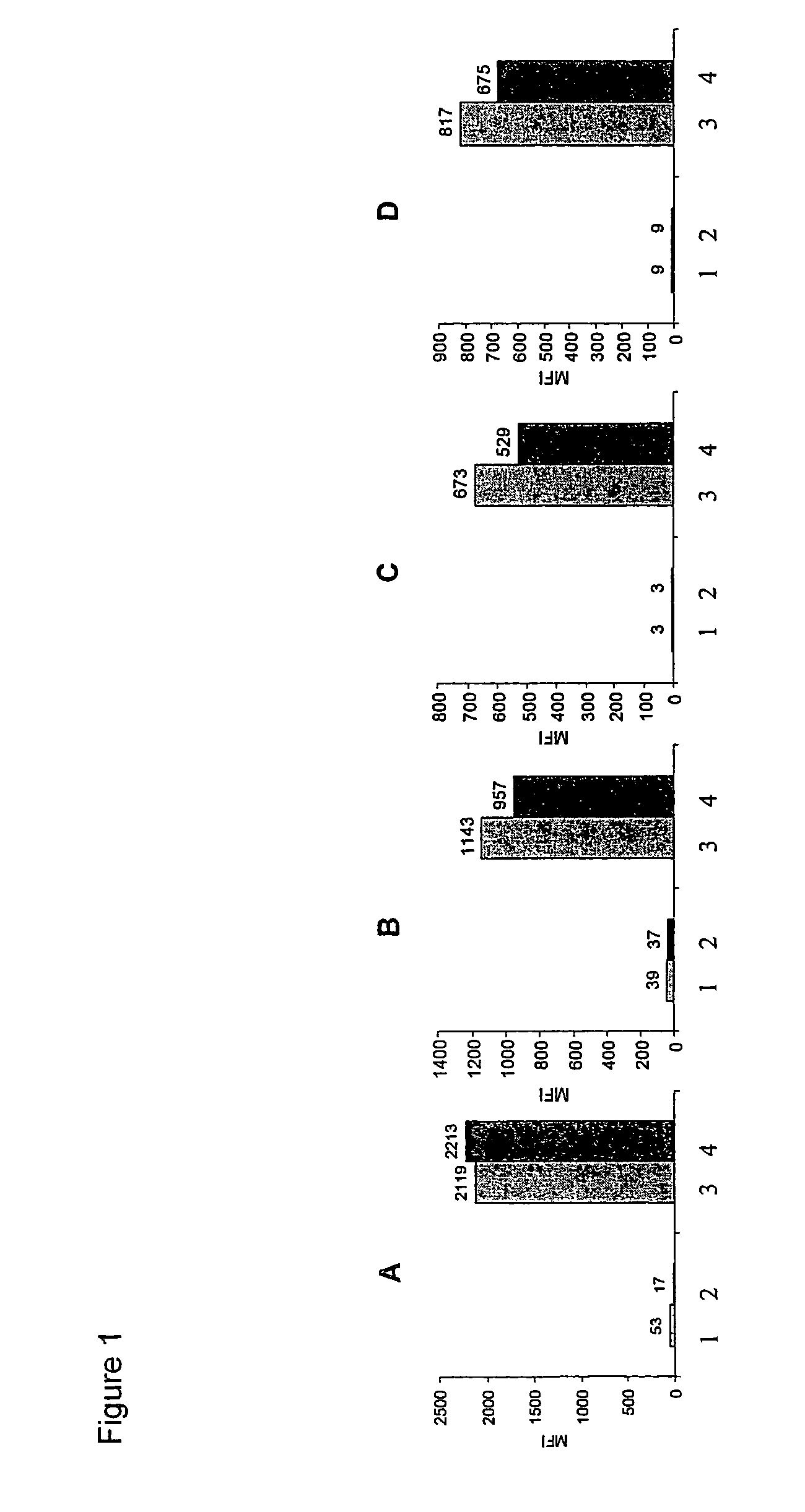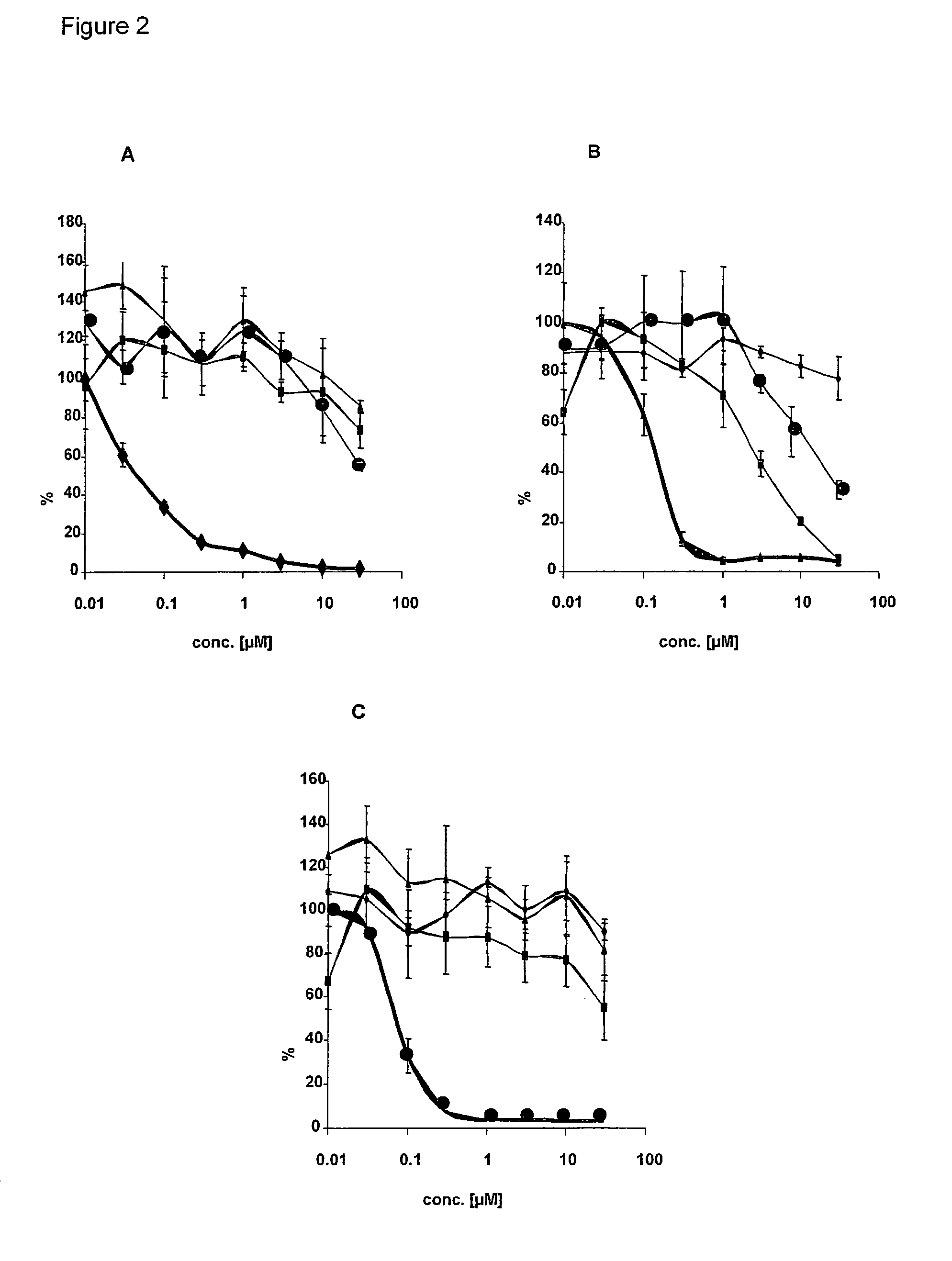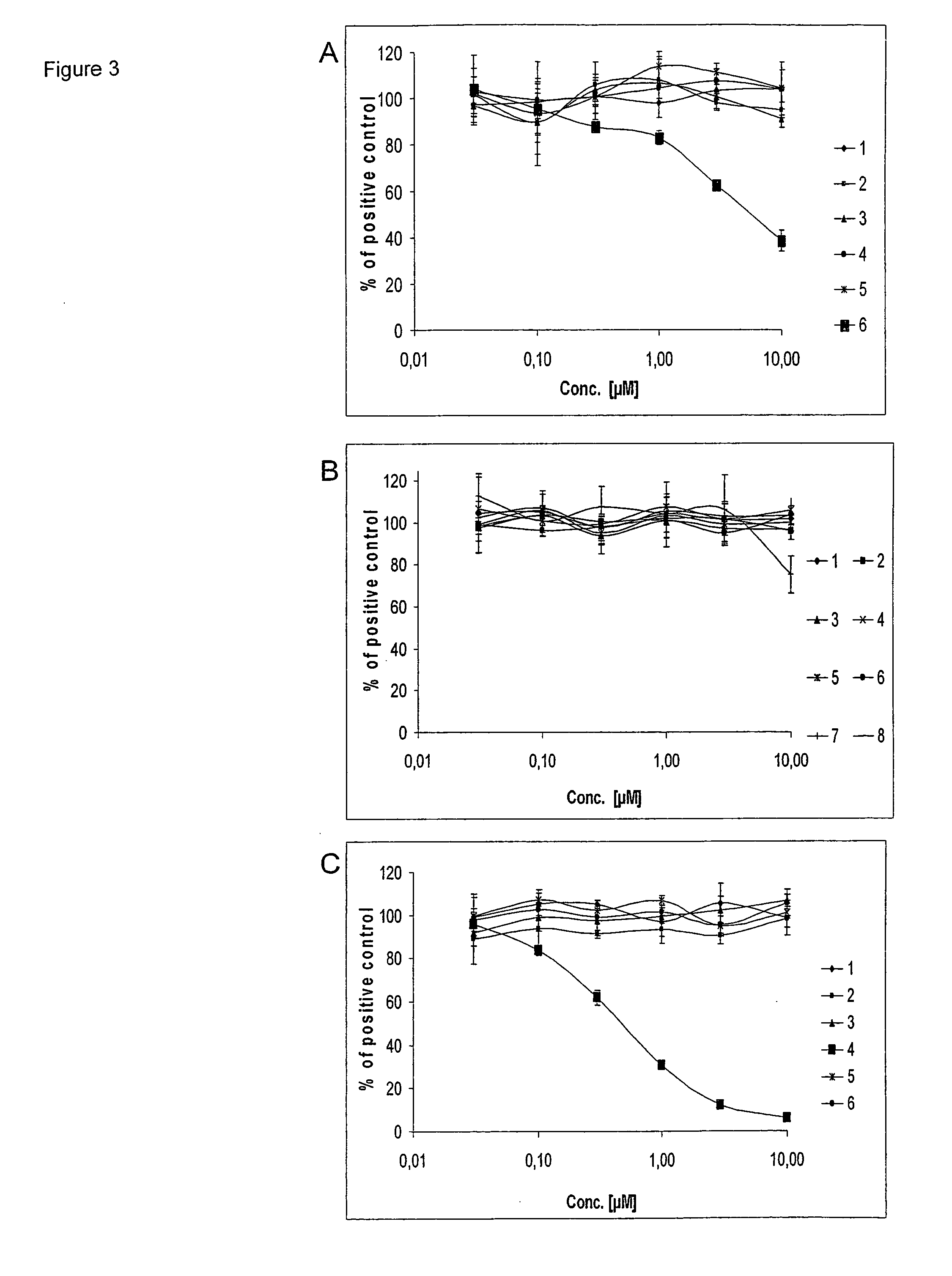Method for measuring tyrosine kinase phosphorylation
a phosphorylation and tyrosine kinase technology, applied in the field of immunoassays, can solve the problems of uncontrollable growth and proliferation of cancerous cells, poor overall survival of patients, and large expansion of the cellular proteom
- Summary
- Abstract
- Description
- Claims
- Application Information
AI Technical Summary
Benefits of technology
Problems solved by technology
Method used
Image
Examples
example 1
Cell Culture, Inhibitor Treatment and Cell Lyses
Human tumor cell line HT29 (colorectal carcinoma) were obtained from ATCC and maintained in Dulbecco's modified Eagle's medium containing 10% fetal calf serum at 37° C. in 5% CO2. 16-20 h before inhibitor treatment HT29 cells were starved in medium without fetal calf serum. Cells were incubated for 45 min with 30 μM kinase inhibitor (EGFR-lnhibitor, FAK-inhibitor, IGFR1-inhibitor or Met-Inhibitor) or in medium without kinase inhibitor as a positive control.
The kinases inhibitors are (3-Chloro-4-fluoro-phenyl)-[7-methoxy-6-(3-morpholin-4-yl-propoxy)-quinazolin-4-yl]-amine (Iressa) for EGFR, 5-(2,6-Dichloro-phenylmethanesulfonyl)-3-[1-[3,5-dimethyl-4-((R)-2-pyrrolidin-1-ylmethyl-pyrrolidine-1-carbonyl)-1H-pyrrol-2-yl]-meth-(Z)-ylidene]-1,3-dihydro-indol-2-one (PHA 665752, Christensen et al. (2003) Cancer Res. (63), pp. 7345-7355) for Met and N4-Quinolin-3-yl-N2-(3,4,5-trimethoxy-phenyl)-pyrimidine-2,4-diamine for FAK and IGFR1.
Activation...
example 2
Cell Culture, Inhibitor Treatment and Cell Lyses
Human tumor cell line HT29 (colorectal carcinoma) were obtained from ATCC and maintained in Dulbecco's modified Eagle's medium containing 10% fetal calf serum at 37° C. in 5% CO2. 16-20 h before inhibitor treatment HT29 cells were starved in medium without fetal calf serum. Cells were incubated for 45 min with different concentration of kinase inhibitor (0.01 μM; 0.03 μM, 0.1 μM; 0.3 μM, 1.0 μM, 3 μM, 10 μM, 30 μM, EGFR-Inhibitor [FIG. 2A], IGFR1-inhibitor [FIG. 2B] and Met-Inhibitor [FIG. 2C]). A positive control with DMSO without kinase inhibitors serves as reference kinase activity (100%).
The kinases inhibitors are (3-Chloro-4-fluoro-phenyl)-[7-methoxy-6-(3-morpholin-4-yl-propoxy)-quinazolin-4-yl]-amine (Iressa) for EGFR, 5-(2,6-Dichloro-phenylmethanesulfonyl)-3-[1-[3,5-dimethyl-4-((R)-2-pyrrolidin-1-ylmethyl-pyrrolidine-1-carbonyl)-1H-pyrrol-2-yl]-meth-(Z)-ylidene]-1,3-dihydro-indol-2-one (PHA 665752, Christensen et al. (2003) Canc...
example 3
Constructs, Cell Culture and Cell Lyses
The catalytic domain of InsR, VEGFR1, FGFR4, PDGFRA, PDGFRB, Fak, Tyk, EGFR, FGFR1, FGFR2, FGFR3, IGF1R, Met, CSF1R, Tie2, NTKRK1, Axl, VEGFR2, Tek, Ros1 tyrosinkinase were subcloned into vector plEX1 (Novagen) for the expression with a N-terminal 6×His-affinity-Tag and S-Tag. Hi5 Insect cells (BTI-TN-5B1-4; Invitrogen) were maintained in Express Five SFM medium (Invitrogen) with 18 mM Glutamine, 50 U / ml Penicillin and 50 μg / ml Streptomycin at 27° C. 1×106 Hi5 insect cells were transiently transfected with 2 μg DNA and 10 μl Gene Juice transfection reagent (Novagen) as described by the manufacturer. 48 h post transfection cells were washed with ice-cold TBS and lysed with 1% NP40 in 20 mM Tris-HCl pH 8.0, 150 mM NaCl supplemented with 1% Phosphatase Inhibitor Cocktail I (Sigma), 1% Phosphatase Inhibitor Cocktail II (Sigma), 0.1% Protease Inhibitor Cocktail III (Calbiochem), 0.01% Benzonase (Novagen) for 15 min on ice. Lysates were centrifuged w...
PUM
| Property | Measurement | Unit |
|---|---|---|
| pH | aaaaa | aaaaa |
| fluorescence | aaaaa | aaaaa |
| luminescence | aaaaa | aaaaa |
Abstract
Description
Claims
Application Information
 Login to View More
Login to View More - R&D
- Intellectual Property
- Life Sciences
- Materials
- Tech Scout
- Unparalleled Data Quality
- Higher Quality Content
- 60% Fewer Hallucinations
Browse by: Latest US Patents, China's latest patents, Technical Efficacy Thesaurus, Application Domain, Technology Topic, Popular Technical Reports.
© 2025 PatSnap. All rights reserved.Legal|Privacy policy|Modern Slavery Act Transparency Statement|Sitemap|About US| Contact US: help@patsnap.com



